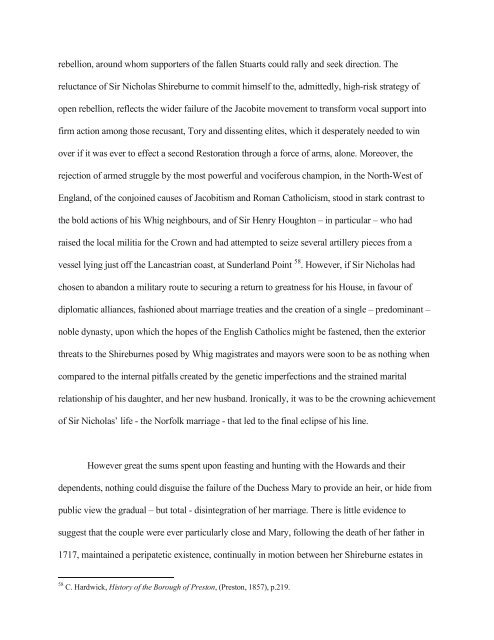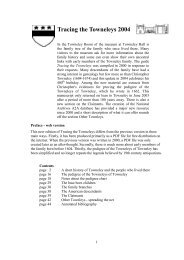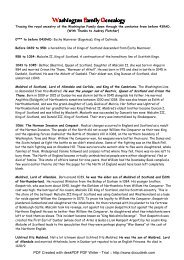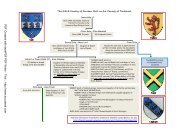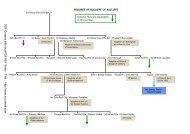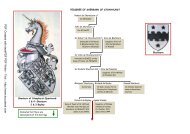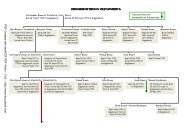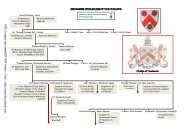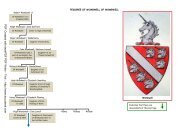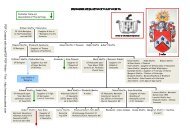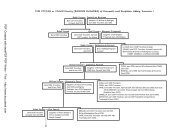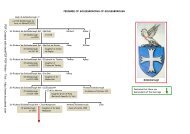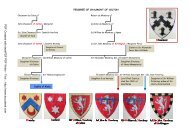SHIRBURNS of Stoneyhurst.pdf - Ingilby History
SHIRBURNS of Stoneyhurst.pdf - Ingilby History
SHIRBURNS of Stoneyhurst.pdf - Ingilby History
You also want an ePaper? Increase the reach of your titles
YUMPU automatically turns print PDFs into web optimized ePapers that Google loves.
ebellion, around whom supporters <strong>of</strong> the fallen Stuarts could rally and seek direction. The<br />
reluctance <strong>of</strong> Sir Nicholas Shireburne to commit himself to the, admittedly, high-risk strategy <strong>of</strong><br />
open rebellion, reflects the wider failure <strong>of</strong> the Jacobite movement to transform vocal support into<br />
firm action among those recusant, Tory and dissenting elites, which it desperately needed to win<br />
over if it was ever to effect a second Restoration through a force <strong>of</strong> arms, alone. Moreover, the<br />
rejection <strong>of</strong> armed struggle by the most powerful and vociferous champion, in the North-West <strong>of</strong><br />
England, <strong>of</strong> the conjoined causes <strong>of</strong> Jacobitism and Roman Catholicism, stood in stark contrast to<br />
the bold actions <strong>of</strong> his Whig neighbours, and <strong>of</strong> Sir Henry Houghton – in particular – who had<br />
raised the local militia for the Crown and had attempted to seize several artillery pieces from a<br />
vessel lying just <strong>of</strong>f the Lancastrian coast, at Sunderland Point 58 . However, if Sir Nicholas had<br />
chosen to abandon a military route to securing a return to greatness for his House, in favour <strong>of</strong><br />
diplomatic alliances, fashioned about marriage treaties and the creation <strong>of</strong> a single – predominant –<br />
noble dynasty, upon which the hopes <strong>of</strong> the English Catholics might be fastened, then the exterior<br />
threats to the Shireburnes posed by Whig magistrates and mayors were soon to be as nothing when<br />
compared to the internal pitfalls created by the genetic imperfections and the strained marital<br />
relationship <strong>of</strong> his daughter, and her new husband. Ironically, it was to be the crowning achievement<br />
<strong>of</strong> Sir Nicholas’ life - the Norfolk marriage - that led to the final eclipse <strong>of</strong> his line.<br />
However great the sums spent upon feasting and hunting with the Howards and their<br />
dependents, nothing could disguise the failure <strong>of</strong> the Duchess Mary to provide an heir, or hide from<br />
public view the gradual – but total - disintegration <strong>of</strong> her marriage. There is little evidence to<br />
suggest that the couple were ever particularly close and Mary, following the death <strong>of</strong> her father in<br />
1717, maintained a peripatetic existence, continually in motion between her Shireburne estates in<br />
58 C. Hardwick, <strong>History</strong> <strong>of</strong> the Borough <strong>of</strong> Preston, (Preston, 1857), p.219.


